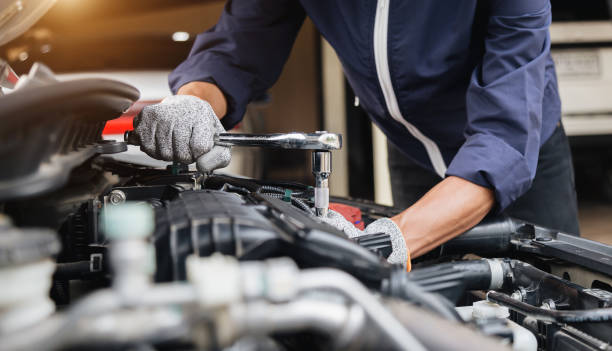
Anthony Bandmann, chairman of the management board at Volkswagen Bank and chairman of the German captive association, Arbeitskreis Autobanken (AKA) began the Motor Finance Europe Conference going over what would become the theme of the day: changing consumer behaviour, driven by a rise in digital technology, means point of sale motor finance needs to look at ways it can change business practices to keep pace.
Although the German motor finance market has strong levels of penetration, Bandmann offered three theories about finance, and how and why the industry needs to change.
The first theory was that, as it stands today, the motor finance industry is already very well developed when it comes to supporting dealers in selling cars though the use of finance.
The second is that customer behaviour is changing rapidly. This led to the third theory: "This will strongly impact the business model that we live today and that we’ve lived in the past years, and we need to develop and evolve within the business model. To a certain degree we might even have to revolutionise this business model."
This won’t necessarily become a threat to the dealer body which motor finance companies have traditionally worked to support. Instead, he said: "I think we can actually become the enabler of digitalisation for the dealer body."
Part of the reason for this, he said, is because dealers have also realised that customer behaviour is changing. One example of this is that Volkswagen Financial Services in Germany has begun to look at used car sales that don’t go through dealers. Bandmann said: "If I said this in front of a dealer body three or four years ago, they probably would have thrown me out of the room."
How well do you really know your competitors?
Access the most comprehensive Company Profiles on the market, powered by GlobalData. Save hours of research. Gain competitive edge.

Thank you!
Your download email will arrive shortly
Not ready to buy yet? Download a free sample
We are confident about the unique quality of our Company Profiles. However, we want you to make the most beneficial decision for your business, so we offer a free sample that you can download by submitting the below form
By GlobalDataNow though, dealers have realised that this is an opportunity. "We can really generate business throughout this market for our own benefit and, on the other hand, we can steer these customers back to the dealer body and generate additional income for them," Bandmann said.
Technological innovations are one reason why customer behaviour is changing. A second is that, although emotions still play an important role in buying a car, rationality is becoming increasingly important. This has made it more important to introduce finance earlier into a customer’s journey.
Looking at how captive lenders can continue to support dealers while working online, Bandmann pointed to Volkswagen’s Leasingbörse online platform, where users can search for cars by monthly price, reserve a car with a dealer, and complete the transaction at the time of exchange.
According to Bandmann, this introduced new business to dealers without cannibalising sales: "We found that about 70% to 80% of the customers that reserved their vehicle, and ultimately leased their vehicle through this website were new customers. We’ve also found that the customer average age is younger than the average age of customers purchasing at the dealership."
Leasingbörse is one example of a lender looking to the internet to find additional sales streams. Sandra Speckbacher, director at KPMG AG WPG, suggested the industry may see more examples of this type of thinking in the future in her presentation alongside KPMG AG WPG partner Ulrich Bergmann.
Right now, she said, the main sales channel for lenders is through the dealership, but in the future this may change to become more internet-focused, through direct sales.
A key part of this is that companies will need to invest in their customer interface IT, not just their back office technology. She said: "In the future it will be more and more important to have the right interface to the customer. Because you have to be on the internet, you need to get on apps, you have to buy or collaborate with fintechs."
Bergmann said captives were still "rookies" from his point of view, when it came to using the internet to help sell finance.
Comparing where finance companies should be, to where they are, Bergmann added: "I always say you have to be five clicks away from the financing contract. Even if you have regulatory burdens, it should be possible for your client to get an offer from you, and it’s very easy, with accessible information, to fix the contract. You are far away from that at the moment."
Another area brought up by KPMG was the growing importance of big data analysis. Speckbacher, for example, noted how this will be increasingly important in the future to see what’s important to the client, what their behaviour is, and how they can be served.
Right now, she said, finance companies lack the analytical ability. One reason for this suggested Bergmann was that it is often not clear who owns the data: the finance provider, the OEM or the dealer. As cars become more connected, and gather an increasing amount of data, he said, this will become increasingly important.
Richard Jones, managing director at Black Horse, also noted how consumer attitude is changing, and that motor finance is behind in some ways. Looking at Black Horse’s parent company Lloyds as a comparison, Jones noted that half of the banks unsecured lending is done online. In comparison the figure for motor finance stands at just 5%.
Improving this figure will be crucial for making sure dealers and motor finance remains relevant in the future, he said, because the rise of the internet has meant that if lenders and dealers aren’t able to offer consumers finance when they want it, and how they want it, consumers will find alternatives online. "Either we adopt our models to give them what they want in a way they find enjoyable, or we die," Jones declared.
Doing so would have an upside, he added, saying: "It’ll make the dealership visit even more enjoyable, because the visit then is about what they’re really interested in, which is the car. So we have to adapt."
Ownership to usage
One of the big changes in consumer habits in recent years has been the shift from ownership towards usership. This was among the topics Jones, spoke about. In the UK this is evident from the explosion in PCP over the past few years, which has been so important in the recovery in new car sales.
Jones noted this has added a risk to the finance business: "It puts a high reliance on residual values. And that residual value risk isn’t with the customer, it’s with the lender. Everybody that is in this market, including the captives, now has big residual value risk sitting on their balance sheet."
There are a number of reasons why residual values might weaken in the future. The number of new cars sold in the UK is currently higher than the number scrapped, and the average age of a car is growing as manufacturers make better quality, more durable cars. Assuming these trends continue, Jones said, supply will begin to outstrip demand at some point.
On top of this, residual value risk has been added to balance sheets when credit conditions are extremely good.
"What happens when the market turns, or credit conditions change, or liquidity starts to dry up, at the same time that you might get a shock in residual values, which would force you to provide more on your balance sheet to take account of the risks you run?" Jones asked.
The answer, he said, was that nobody
really knows, as when the market suffered RV shocks in the past, lenders didn’t have this risk on their balance sheets.
Jones concluded by suggested two potential future scenarios: "Scenario A is that we keep seeing UK car sales growing. The dealer stays absolutely essential to car sales and car finance sales, and therefore the lender stays very much in traditional point of sale finance lending. And the manufacturer continues as the main financier particularly on new, and continues to subsidise in the way that they have in the past.
"Scenario B is that car sales actually start to decline in the UK. Car and financing gets completely split, because of the influence of digital in particular. Dealers have to rely on making money out of selling cars, rather than selling finance and insurance. The lender has to become multi-channel, point of sale finance no longer dominates, the manufacturer starts erring much more towards a direct consumer model, and they become focused on being a car manufacturer, not a bank."
The probable future, Jones said, would probably end up somewhere between the two.
A more usage model was explored in the next session by Ian Pattison, the co-founder and executive president of Spanish car-
sharing company Respiro.
Part of the reason why companies such as Respiro are cropping up at the moment, he said, was because the total economic cost of car ownership is becoming increasingly transparent. "A car is underused – it remains idle around 96% of its lifetime. Its average use time is less than an hour a day." For many average car users, car sharing could save costs, Pattison said.
The rise in car sharing platforms, Pattison said, could create a socially transformative paradigm, adding: "This is important for millennials, who are not necessarily car owners yet, as they begin to take more rational decisions in terms of their transport options."
Having seen Respiro grow at an extremely rapid rate since its 2010 launch, something it has in common with many of its car sharing peers, Pattison added that one potential future is where the so-called shared economy and autonomous vehicles fully replace car ownership models. "But this is a gradual, incremental and very slow process" he added.
When asked why this would be a gradual process, Pattison gave two main reasons. The first is that car sharing in its current form relies on high demographic density. Respiro, for example, is based in Madrid, one of the most densely populated cities in Europe. As a result, certain countries without this density, such as those in Scandinavia, and even Germany, feature large areas where car sharing simply isn’t viable as things stand.
A second reason suggested was that technological innovations can take time to pick up mainstream adoption initially.
"We’re happy with the growth we’ve had," he added, before warning: "This is a snowball phenomenon – it’ll grow faster and faster."
Naturally this would appear to pose a challenge to manufacturers, and ergo captives, however Pattison suggested this needn’t be a doomsday scenario. While he admitted it may reduce the total number of vehicles sold, he noted that one-third of the population doesn’t currently own a car in most European countries, and a relatively high percentage of car share users come from this background.
Many of these themes were also picked up by Graeme Banister, director of consulting, mobility, at Frost & Sullivan, in his talk on the shift from ownership to usage, something he also described as a paradigm shift.
As usage takes hold, he said, the competitive landscape is shifting as people move towards having better mobility. "That doesn’t mean moving away from the car, it’s about converging, and making the best use of resources and your own capital," he added. As a result, new business models are being born, such as Uber.
One area Banister looked at was car sharing businesses, such as Pattison’s Respiro. Car sharing, he said, can be broken down into two broad types: Round trip, where the car is generally returned to the point of pickup, and free floating, where the car is dropped off in parking spaces. Both of these are growing rapidly, he said.
One specific change Bannister noted he has seen was a rise in corporate car sharing. He said: "When we speak to companies, they say they’ve got a pool of cars which they want to take out and replace with corporate car sharing vehicles because then they can get better utilisation."
On top of this, Banister described P2P entrants as being ‘incredibly disruptive’. "P2P is me offering up my car to be rented by someone who’s looking for a vehicle for one hour or two hours a day," he said. "Cars are underutilised," he added.
While these models will undoubtedly pose challenges to traditional lenders, there were some opportunities in and amongst them. One Banister pointed to was: "In the urban environment, you might have somebody who is quite used to public transport, and happy to use it three or four days a week. But they need a car for three days a week. Right now, potentially, they are stuck in public transport. If they had a product where they could buy into a car, for £300 a month, and rent it out for £100 a week, for example, and this is taken off the cost of their vehicle, then this is a way to reach new customers."
Concluding, Banister said: "Traditional car finance, the ownership product, is being eroded as a result of usage. It will need those players to look at their product set to make sure they’ve got the right level of products to meet the customer of the future."
The final speaker for the day was Karl Werner, who has since been named chief executive officer of the motor arm of MotoNovo Finance.
Like Black Horse’s Jones, Werner suggested two potential futures. One with lenders beholden to tradition, because there is too much risk to change. In this scenario, Werner suggested that innovators would win at the cost of lenders and dealers.
Alternatively, Werner said, lenders and dealers could work together to make sure they stayed relevant in the future. A large part of this came down to making sure customers are able to access finance products.
Werner noted that at the moment the industry operates at an 80-20-80 rate – 80% of people want finance, 20% of people get it, and of those who do, 80% like it. Looking at dealer finance web pages, Werner said he shakes his head at how many of them are just enquiry forms. "That’s a bit like trying to shop for groceries, knocking on Tesco’s door, saying I’d like to buy from you, and them saying here’s a form, fill it out, we’ll get back to you," he added.
Adding convenience to buying finance, in terms of making money and information more accessible, would go a long way of turn the 80-20 state of affairs to 80-80.
A key part for Werner is ensuring that future plans work out in a better resolution for lenders, dealers and customers, a win-win-win scenario, he said.
In order to get up to 80-80, however, he said, "that’s going to cost someone some money in the short term". He added: "We’re not the ones necessarily that are going to have to take all of that risk.
"Dealers, that have processes in place built around income per retail unit now, will have to take a view as to how they can get their 20 to the 80."
Another challenge he mentioned was that of motivation for lenders and OEMs to invest in potential changes. Kodak, he pointed out, held the original patent to digital cameras, but board bonuses were related to print. "It was a personal choice, and that’s what I’m trying to say. It’s down to this current generation as to what investment and change we decide to back for the future," he concluded.
One last point Werner made, reflecting on some of the discussions which had taken place over the day, was: "It was mentioned a lot today that the customer journey is changing. It’s not changing, it’s changed. Customers have wanted to know their answer, get it quickly, know what they’re buying, and why it’s been recommended to them, for a decade or more. It’s a question really as to when we’re going to change."






